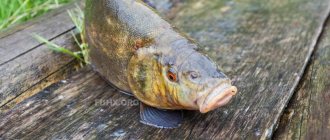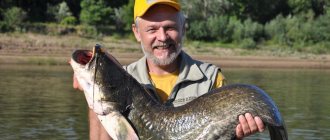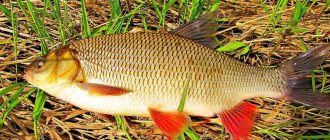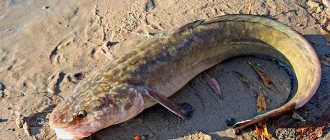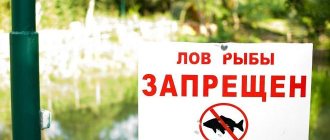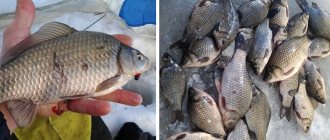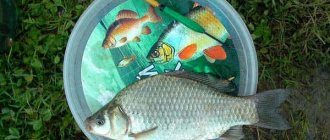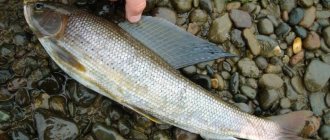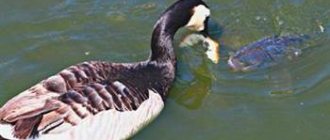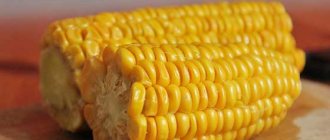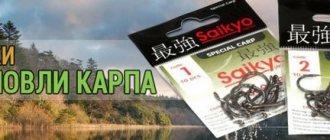Sterlet fishing today is no longer distinguished by the massive scale and production that it was famous for a century ago, when fishermen were engaged in this fishery on almost all the major rivers of our huge country. Serious deterioration of the ecological situation caused by increased human activity in the industrial and chemical spheres has led to a strong reduction in the number of this fish, as well as, in principle, all other sturgeon species that are sensitive to water purity. Today, sterlet has become a rare trophy among fishermen, and not in all parts of the country one can hope for success.
Due to the small population, this species of sturgeon is listed in the country's Red Book . Sterlet is carefully protected by the state, which regulates the removal of fish from natural bodies of water by issuing special permits for commercial fishing. But still, the fisherman, in addition to the option of obtaining a license, has an easier way to enjoy sterlet fishing by fishing on paid ponds, the number of which is increasing every year. Fishing strategies for all sturgeon species have their own characteristics, and sterlet fishing is no exception.
It is in this direction that we will lead our conversation, focusing not only on fishing gear and hunting tactics, but also on issues of legitimate fishing without violating the laws of the country.
What kind of fish is sterlet
Sterlet, like its more famous relative sturgeon, are valuable commercial fish species. In addition to the excellent taste of the meat of this breed, the delicious black caviar, which is no longer so often seen in sales, is of great value. A bright representative of sturgeon breeds leads a school lifestyle. The fish reaches sexual maturity late. For example, males go out to spawn for the first time at 4–5 years, and females even longer, becoming ready to spawn no earlier than 6–8 years.
The fish in its sturgeon genus is not distinguished by its huge dimensions. Living up to 30 years in the wild, the sterlet can grow up to one and a half meters and weigh 15–20 kg, which, of course, is not comparable to some giant relatives such as the beluga. Such individuals practically never make it into catches, and most often the fisherman is content with catching specimens measuring 50–70 cm and weighing 2–3 kg.
The fish has a typical sturgeon body structure, familiar even to the average person, with an elongated, sharp head ending in a mustache and a mouth adapted for collecting food from the bottom. There are no scales on the body of the sterlet, but there are bone growths located in rows along the entire body of the fish. In the classics, the color of the fish is brown on the back, with a whitish belly that turns yellow and gray fins, but in nature the fish has many shades of these primary colors, which depends on the habitat and the color of the bottom. In the cold winter period of the year, the sterlet loses activity, falling into semi-anabiosis, and catching sterlet is mostly possible in open water and is especially effective in the warm period of the year.
Where is the sterlet found?
At the moment, the population of this sturgeon species can be found in the basins of the Black, Caspian, Azov, Barents, White and Kara seas. They are largest in number in rivers such as the Volga, Irtysh, Yenisei and Ob. You can successfully catch sterlet on the Kuban River, as well as in some rivers of the Altai Mountains. The sterlet, unlike other sturgeon species, lives exclusively in fresh water and does not stay near the confluence of rivers into the sea. Fish is sensitive to water purity, does not tolerate pollution and needs constant and high oxygen saturation.
It inhabits sections of rivers with strong currents on hard soils made of clay and compressed sandy sediments, and inhabits pebbles and shell banks. The fish avoids muddy and algae-covered areas of water areas with low currents, and it is completely useless to look for them there.
Important! The fish leads a bottom-dwelling lifestyle, staying in deep holes and channel ditches.
It feeds on the ground, looking for it on the edges of bottom anomalies, and in rare cases going to the shallows. During the spawning season, it rises upstream, where it spawns in the deep places of small rivers, laying 100–150 thousand eggs per female. In late autumn, before freeze-up, it rolls into riverbed wintering pits and loses feeding activity, making the period for fishing unproductive at this time.
Using donkey
Avid fishermen consider fishing for sterlet using bottom gear or a casting hook the most interesting way. This can easily be explained by the intention to become the owner of the long-awaited loot as quickly as possible.
At the very beginning of summer, fishing for sterlet using a donkey with rubber shock absorbers can be very successful. This method is highly effective because it makes it possible to use up to five leashes without scaring off any fish.
During this period of time, the sterlet comes to feed closer to the shore, so this method of fishing gives the largest catch.
Gear requirements
For bottom tackle, an inertial reel is used, with which you can make a good long cast, prevent snagging, and make fishing easier.
Sterlet is not a shy fish, so the color of the fishing line can be any.
This type of fish is not often taken off the hook, and therefore the quality and strength of the fishing line may not be given much importance. You can use a fairly thin fishing line, as long as the leash is thicker. Usually they take a fishing line with a thickness of about 0.35 millimeters.
The leash is made from twenty to forty millimeters long; it can be permanent or removable. The removable leash has greater functionality in use; it is easier to replace and more convenient to use.
You can store such leashes without any problems.
Sinkers are selected depending on how cluttered the river bottom is and how strong the current is. The optimal weight and shape of the sinker is selected only through experimentation.
For the long mouth of this fish, a number five or seven hook is suitable. One fisherman is allowed to use no more than five hooks.
Bait
Earthworms or red dung worms, bloodworms, maggots, and small butterflies are used as bait. The size of the worms should be large or medium. Many fishermen pierce the worm several times when attaching it to ensure more stable engagement.
When preparing the bait, you should remember that sterlet prefers baits of animal origin.
However, it is permissible to combine them with herbal ones. Such a combined bait should emit a pungent aroma, for example, the smell of decaying fish or garlic. It must be lowered to the very bottom of the river.
Small bait may go unnoticed by the sterlet. Its mouth is large, so it can easily swallow bulky bait.
You cannot use hard bait; the fish will immediately spit it out, mistaking it for a stone.
How to catch
Taking into account the fact that this fish is a schooling fish, the main point when catching it is the choice of place. We need to find where she can feed most often.
Sterlet bites better in the dark, the bite is quite quiet, but reliable.
Sterlet biting calendar
Successful sterlet fishing depends on the season of the year. Although the fish is not a heat-loving species, it is quite dependent on water temperature, which affects its basic vital functions. March is considered the opening of the sterlet fishing season, or more precisely, the time when the ice melts from the reservoir. As the waters warm up, the fish begin to become more active, preparing for the upcoming spawning, regaining their lost strength over the winter. In spring, flocks often approach the shores, where fishing can be done with a regular float rod. Captures are not as frequent, but still occur throughout the daylight hours. In May, the spawning period begins, when the population suddenly stops feeding, migrating to the spawning areas.
| January | February | March | April | May | June |
| — | — | + | ++ | — | + |
| July | August | September | October | November | December |
| +++ | +++ | ++ | + | — | — |
The non-biting period lasts until the beginning, or even mid-June, after which the most productive season for production begins. In the summer, when the water temperature stabilizes, the fish begin to feed intensively and plentifully throughout the day, including their night part. Sterlet pecks in summer around the clock. The daily peak of the bite occurs in the early morning hours and at sunset.
Important! There is a periodicity in the intensity of the bite, the so-called exits, the time of which at certain points does not change throughout the season.
With the onset of autumn cold weather, fish break away from the boundaries at changes in depth and go to wintering pits. Now you should expect bites during daylight hours, looking for schools directly in the pits. Strategies for this kind of fishing are justified until ice is established on the reservoir, after which the prospects for hunting are reduced to zero until the next spring flood.
Tactics and fishing techniques
Fishing for sterlet fish begins already in March and successfully continues until the end of November, until the reservoirs are covered with ice, but the best time is: before and after spawning, the moment of cold weather in August and the stage of sliding into wintering pits.
Almost all methods of catching sterlet are aimed at catching several individuals, since when one fish is found, there is a high probability of catching other individuals from the flock. The prey feeds throughout the day, but at outlets, that is, if there are no bites for a long time, it is not at all necessary to change the place of fishing.
Read more
How and what to catch bleak in the spring?
Catching sterlet with a fishing rod and float is possible only in the spring, when it approaches the shore. It’s better not to rely on one tackle and cast several rods at once, preferring donks.
Successful fishing tactics:
- We determine the presence of deep holes at the bottom.
- We throw the donk on one side to the exit from the pit, also install the tackle on the second side and throw it in the center.
- When we find a snag, be sure to cast the tackle closer to it.
The best bite is at night and in the morning. During the day and evening, activity decreases slightly; now we recommend experimenting with the length of the leash. Bait is not mandatory, but if one fish finds an area with an abundance of food, a school is likely to swim there.
Only in spring it is possible to catch sterlet using a fishing rod with a float.
Catching sterlet using various tackles
Catching sterlet is not an easy process, due to the specificity of its habitat and the behavior of the fish itself. Secretive and sensitive to suspicious noises, the sterlet stays at long distances in the reservoir, at considerable depths near the very bottom. In addition to these factors, the organization of fishing in strong currents makes fishing more difficult. The first priority for the fisherman is to find a promising fishing spot, focusing on differences in bottom levels in the deepest holes and ditches. In certain cases, a floating device will be required to ensure successful fishing.
Fishing from the shore is carried out in places convenient for casting, since without long-range gear it is often not possible to get a trophy. In practice, many fishing methods are applicable, including float rigs, catching fish with a spinning rod, as well as unconventional and, so to speak, endemic methods inherent in a certain territorial region. But still, more significant and confident results are brought by bottom fishing, which closely corresponds to the specifics of the habitat and the feeding method of the trophy. Fishing for sterlet on donka is popular in all regions where this fish is caught, and can be carried out in several directions, specifically about which, as well as about other hunting methods, the reader will learn from the continuation of the article.
How to catch sterlet on donka
The simplest and most accessible bottom tackle is a zakidushka, assembled on a wooden reel or on a spinning rod. Heavy spinning rods over three meters long are suitable for casting, guaranteeing long casts of massive loads that help hold the bait in strong currents. The structure of the form must correspond to the medium or fast type, which gives sufficient information to the installed gear. The spinning rod is equipped with an inertial or power inertialess reel with a friction brake and preferably a baitrunner, which will save the tackle from floaters in the form of algae or a floating branch or small log.
The reel is equipped with a 0.2 mm braided cord, at the end of which a flat lead weight is placed and a fluorocarbon leash with a hook is attached. A leash 0.25-0.3 mm thick and 30–50 cm long is sufficient to ensure fishing conditions. The zakidushka is placed on the shore, on a flyer, equipped with an audible alarm. It is effective to use several hooks at once, increasing the likelihood of a bite, especially when a school of fish approaches the feeding zone.
A feeder rod allows you to catch sterlet on a donk in a more modern way. Heavy feeders, similar to carp fishing rods, are suitable for this type of fishing. Their use is not particularly related to the power of the caught fish and its resistance when playing. Rather, the increased carrying capacity makes the tackle suitable for fishing in strong currents at great depths and long distances. Like the rod itself, the spinning rod is installed in a reinforced version with a baitrunner and a finely tuned clutch, with a spool size of 4500–5000 units.
Feeder installation is an asymmetrical loop, a more suitable option for equipment. The weights are heavy mesh rectangular feeders filled with chopped worms, the mass of which reliably anchors the tackle thrown into the water. A braided cord of 0.18-0.20 mm is used as a basis. The leaders are 0.2 mm fluorocarbon, which copes with the problems of fishing on shell rocks and pebbles, having the best abrasion resistance. The installation ends with a hook with a long shank, number 8–10.
On a float rod
You can catch sterlet with a fishing rod starting in the spring, when the fish approaches the coastlines, and if you have a boat, you can use float rigs throughout the productive season of open water. For equipment, fly rods, match rods and Bolognese rods are selected. Sterlet is calm when fishing and for fishing, the angler does not need a powerful rod with a large margin of safety. Forms are selected depending on the fishing distance, allowing you to comfortably deliver the bait to the hunting point. For easy storage of fishing line, the fishing rods are equipped with an inertial reel with a supply of monofilament fishing line with a thickness of 0.2-0.3 mm.
The float installation consists of a sliding spindle-shaped float with a high, visible antenna on the water and weights and pellets spaced along the fishing line to balance the signaling device. The bait is placed on the bottom, pressing with the required weight of the underlayment. The line leash is equipped with a thin hook number 10–12. The fishing method allows the equipment to be dragged along the bottom, which attracts the sterlet and forces it to pick up the bait it carries. Bait is not effective in fast currents, so in most cases it is not used at all for catching sterlet.
Spinning
Spinning tackle for sterlet is used in the autumn, when flocks migrate to wintering pits and the water level drops significantly. Heavy spinning rods are used for fishing the edges of holes, using a uniform and slow pull of bait of animal origin along the bottom of the reservoir with a loaded cord. The spinning rod is equipped with a spinning reel of 3500–4000 units, with a friction brake. 100 meters of braided cord with a diameter of 0.15-0.18 mm are wound into the spool. At the end of the installation, a sinker is mounted, which allows its mass to stably hold the monofilament leash with a hook and nozzle at the very bottom. If there is any interference with the wiring, you should immediately make a sharp hook, spotting the fish trying the bait.
Another way of fishing
The universal and seemingly irreplaceable donka for sterlet is being replaced in many regions of our country by its local tackle, which has been used in catching the trophy for centuries. For example, during the period of mass emergence, mayflies use such gear as a tug. Leashes equipped with hooks with bait are placed on the cord and pulled across the surface of the water. The bait glides across the surface, attracting fish from the depths. The method is applicable on narrow rivers, but to implement it you will need a partner. This type of fishing is not considered poaching.
Catching sturgeon using a donkey
Unfortunately, environmental conditions are steadily changing for the worse. And now, besides poachers’ fishing rods and seine nets, the only equipment for catching sterlet is the donka. You can only catch it on a float by accident.
The most common donkey now is the running tackle. On powerful spinning rods that can withstand casting a sinker of 60–100 grams, an inertial reel with a fishing line of 0.25–0.35 mm is attached. A flat, heavy sinker is attached to the end of the main line.
Hooks are used with a width of 7 mm with a long shank. They are easier to pull out of the sterlet’s fleshy mouth. Any innovations in the form of feeders or running sinkers are not used.
This type of equipment has its advantages in the form of long-distance casting, which does not require pinpoint precision.
Thanks to the flat sinker, the tackle is pulled out easily and quickly, therefore, no unnecessary problems are created when fishing. With two hooks there are far fewer snags.
It is used for catching sterlet and donk with an elastic band, but only at the beginning of summer, when it feeds close to the shore, and does not require long casting, which is unsuitable for this tackle. In addition, the “elastic band”, as a very mobile tackle, needs precise knowledge of the fish’s habitat. Otherwise, you can sit on the shore with it, without waiting for a single bite.
As mentioned above, the structure of a fishing rod for sturgeon fishing is the same as for carp fishing. Therefore, we will consider catching sturgeon on a donka based on the advice of carp fishermen. There are several options for a rod for bottom fishing: a rig with a sliding flat sinker, with a drop-shaped sliding sinker and swivel, with a sliding weight on a separate leash, with a loop of thick fishing line and a loop twisted in half.
Read Makukha for DIY fishing
The first two options are rarely used by fishermen, because if the sinker gets caught, you will have to say goodbye to all the gear. The third option is the most optimal, since when hooked, only part of the gear will be lost and it is possible to change the load and adapt to the current or make a longer-range request.
The dimensions of the hook, the length of the leash and the diameter of the fishing line are the same as for float fishing.
You should also not forget about additional equipment: a set of various sinkers, leashes, hooks, a rod stand, and landing nets.
All components of the gear must be balanced, which will allow you to make accurate casts, keep the bait in the right place, not paying attention to the strong current, and achieve stable results. Technically, the process of fishing with bottom tackle is divided into the following stages: casting, installing the rod, adjusting the tip, responding to a bite, hooking and landing fish. If you come to a new place, you should study the fishing area
To do this, make a couple of casts with a sinker
If you come to a new place, you should study the fishing area. To do this, make a couple of casts with a sinker
Technically, the process of fishing with bottom tackle is divided into the following stages: casting, installing the rod, adjusting the tip, responding to a bite, hooking and landing fish. If you come to a new place, you should study the fishing area. To do this, make a couple of casts with a sinker.
forward. The tip of the rod should be at 11 o'clock on an imaginary dial.
The heavier the tackle, the more force is applied to the cast. As soon as the rig hits the surface of the water, the reel spool should be slowed down slightly to avoid the leader getting caught on the sinker.
When fishing in bodies of water with a slight current, the bottom fishing rod can be placed on a stand parallel to the water surface or tilted slightly towards the water.
We present to you a video on catching sturgeon on a donka.
If there are no bites for more than 30 minutes, it is recommended to change the fishing location.
Since sturgeon is a very large fish, it is best to catch it on a donk. It is necessary to choose a durable bottom fishing rod. Some of the most effective are carp fishing rods.
The best equipment option for bottom fishing is to choose a tackle with loops made of thick fishing line and double-twisted fishing line. If the fish breaks, you won't lose all your gear.
It is best to choose a feeder or carp line. Diameter – in the range from 0.24 to 0.30 mm. The length of the fishing line is 150-200 m. The reel should be chosen with a free spin.
When choosing a hook, try to choose the most durable options. For example, a carp hook size No. 2-No. 6. Hooks with barbs on the shank, which are usually used for catching catfish or barbel, are suitable.
Criteria for choosing gear
The criteria for choosing an effective type of gear for catching sterlet directly depend on the hunting season. Despite the fact that donks satisfy most fishing conditions, it is worth taking into account the fact that with the beginning of spring, during periods of floods and river floods, schools of fish can move from deep sections of rivers, approaching heated shallows, where the availability of nutritious objects is much higher than still in cold waters. During this period, having scouted the trajectories of a school of sterlet, it is quite possible to have good catches using classic rods with float rigs.
With the beginning of the flight of insects, which coincides with the end of sterlet spawning, especially on small rivers, fishing with surface baits using the drag technique is productive. Throughout the summer, feeders and casting for sterlet will be out of competition compared to other fishing gear. This type of bottom equipment allows you to accurately deliver bait to the intended zones, at the boundaries of the transition from shallows to depths at long distances from shorelines, without particularly disturbing the sensitive sterlet with boats and their motors.
As we have already noted, when the fish retreat to the pits in the fall, you can try spinning fishing with a moving bait. Despite the freeze-up, having information on the presence of fish in a particular hole, attempts to catch sterlet in the winter can be successful, especially when times of strong thaw come with water flowing into the holes. From the ice, directly above the hole, they place a stand in anticipation of the selection of bait by the active individual of the intended trophy.
Fishing tactics
With the onset of summer, sterlet is caught using bottom gear, which is equipped with an elastic band. Perhaps this is one of the most effective methods of catching this type of fish, which uses a lot of fishing. Looking for food, the sterlet comes closer to the shore, so casting gear is not particularly difficult for fishermen.
Fishing in the summer, when the season is at the end, you need to take into account that the fish move to a long distance. During this period, donks are used with such a load, the weight of which will allow you to hold the tackle in the current. The ability to make long casts is important for an angler. Therefore, powerful rods are used that are suitable for catching catfish or carp. Inexperienced fishermen often try to throw the load by hand. However, it is not always possible to achieve a good result.
Read more:
Pike fishing in spring
When fishing with a float rod, it is better to use long rods. Fishing rule: tackles are thrown into places with a flat bottom. Bottom casting rods are equipped with a ribbed weight weighing no more than 300 g and many hooks for fishing (up to 10 pcs.). It is necessary to select sharper and thinner hooks for fishing. Since the sterlet takes the bait very quietly, the bite occurs almost unnoticeably. Therefore, the fisherman has to periodically check the gear.
What to catch sterlet with
Under natural conditions, all species of sturgeon prefer to feed on animal feed. The sterlet is no exception in their list, collecting from the bottom various zooplankton, insect larvae, aquatic worms and beetles, small crustaceans and molluscs, not disdaining the destruction of other people's spawning nests, happily eating fish eggs. The emergence of the mayfly does not go unnoticed by the fish. Despite its natural tendency to feed from the bottom, the sterlet manages to rise to the surface and, turning belly up, masterfully and quite deftly collects insects that have fallen on the water.
Bait for sterlet will not become something exotic for the fisherman. The best bait option is the familiar dung worm, mounted on a hook either one at a time or in a bunch, so that it is as mobile as possible. It has been noted that the larger the bait, the higher the likelihood of catching a large fish. In addition to worms, maggots and caddis flies are used for hunting, strung on hooks in dense garlands, adding massiveness to the bait. To obtain trophies from the surface of the water, grasshoppers and large bloodworms, as well as dragonflies, are used.
In the spring, smaller baits are placed in the rigs than when forming bait in the autumn, when the fish tends to eat large amounts of food and gain fat for the winter. In habitats where there are colonies of mollusks or crayfish, you can catch sterlet on a donk using their fresh meat.
Baits and lures for fishing
When choosing bait for fish, you should give preference to the following types:
- you need to use large worms; when baiting, the bait is pierced in several places, this will allow the bait to be firmly fixed;
- bloodworm;
- butterflies;
- insect larvae;
- maggot;
- fry;
- combined baits with a pungent odor.
Let's celebrate! Many anglers also catch fish using chicken giblets and pieces of fish. When choosing bait for catching sterlet, you should remember that the fish bites on bait of animal origin.
Permit for catching sterlet
Free fishing for sterlet is possible only on a paid reservoir that operates according to its own internal rules. For the rest of the country, fishing is prohibited or limited and is only available if the fisherman has a license . Licenses are issued by local authorities after payment of a certain fee. The size of the fee varies from region to region, as does the amount allowed, even if there are licenses for the volume of fish caught.
Important! Fishing without permits is punishable by law and imposes a significant fine on the fisherman.
Fishing with illegal tools, nets, slings and spears, even entails criminal prosecution with substantial compensation for the damage caused to nature. There is a universal ban on fishing during the spawning period and near wintering pits. A sterlet caught in the bycatch must be carefully removed from the hook and released back into the reservoir, because only by following the rules and caring for this rare fish can we revive the former population of sturgeon, giving hope to future generations of fishermen to experience the incredible pleasure of catching the legendary trophy.
Where to catch sturgeon
Habitats
In the European part of our country, sturgeon lives in the Caspian, Azov and Black Seas, as well as in the rivers flowing into them. It can also be found in the rivers of Siberia. It is also found in lakes, for example, in Baikal and Zaisan. In addition to this, it is also bred in paid stocked reservoirs.
Permitted and prohibited fishing areas
Industrial fishing of sturgeon is permitted only in some areas of Siberia, where people still live by subsistence farming. However, even they can catch only 55 tons of sturgeon per year.
Amateur sturgeon fishing is permitted in any region of our vast country, but only on paid ponds and with a permit. Catching this fish in open waters is prohibited and punishable by law.
What is the penalty for illegal fishing?
Each region of the country has its own rules about what kind of fish and in what quantities can be caught. But it is strictly forbidden to catch sturgeon, regardless of the region:
- For example, for one caught Atlantic sturgeon you will have to pay a fine of 40,000 rubles, regardless of the region where you catch it.
- For catching sturgeon in Siberia, a fine of up to 1,000,000 rubles is imposed, as well as imprisonment for up to 3 years.
- If you decide to fish for a representative of the Red Book during spawning, then be prepared to shell out up to 300,000 rubles from your pocket.
In this case, you will have to pay for each individual caught. You also need to remember that for catching fish that is in the Red Book, you face criminal liability under Article 281 of the Criminal Code of the Russian Federation.
Reservoir type and habitat depth
Sturgeon lives in water bodies of all types. This fish can be found in rivers, lakes, and seas. Sturgeon is considered a bottom fish, so depending on the body of water, it can be found at a depth of 2 to hundreds of meters.
Read: Coelacanth fish
Make it a rule, on every fishing trip, the first thing you do is...
Where can you catch sturgeon?
Let's look at the main places on the reservoir where you can catch this fish:
- Sturgeon very often choose the deepest places in the reservoir for rest. Therefore, if you find a hole at the bottom, it makes sense to fish for it.
- The place where the tributary flows into the main body of water is considered catchable. This is explained by the fact that such places are saturated with oxygen, and sturgeon, as an active fish, likes this.
- You can also catch it in places with a soft bottom. He “goes out” there to feast on insect larvae.
- Fishing in places where shallow water smoothly turns into depth can also be successful. In such places this predator prefers to hunt fry.
- Sturgeon can also be caught in shallow water. It often feeds at depths of up to 1 meter.
- If you decide to go to the lake, the best places for fishing will be the various slides at the bottom. These may be hills overgrown with algae, or rocky formations.
What is the best time to fish?
Fishing for sturgeon at night is prohibited in our country. Therefore, if you want to fish in the dark, you will have to go to a paid reservoir. During the daytime, it is preferable to fish before 10 a.m., or after 4 p.m.
https://youtube.com/watch?v=2giuSbXquZM
